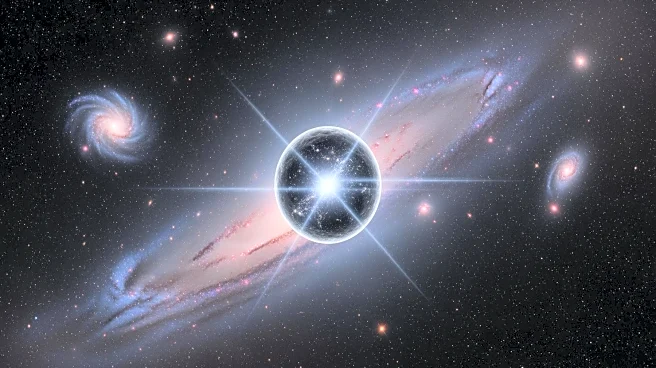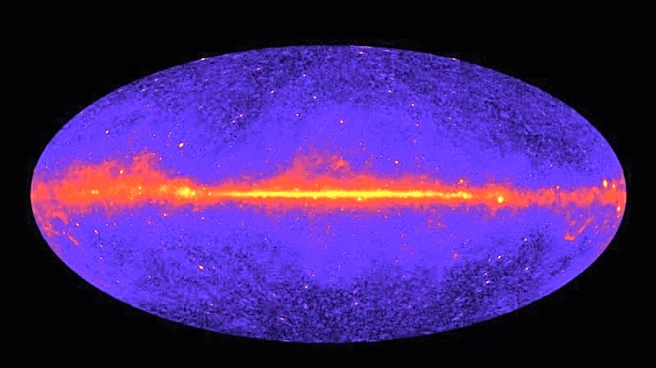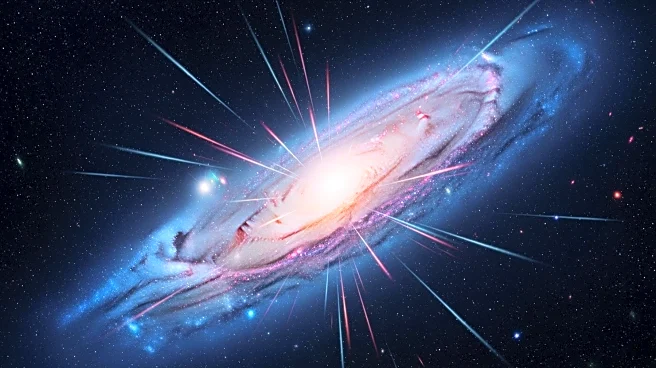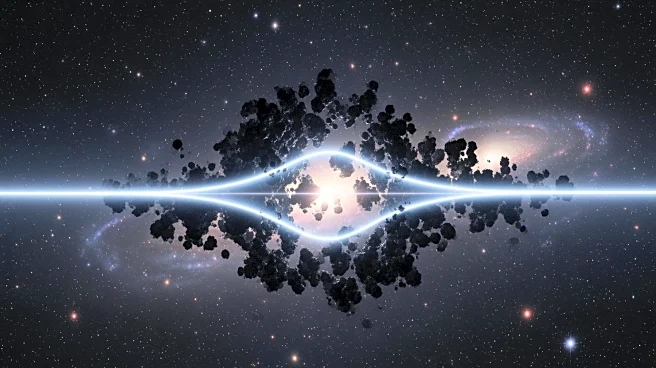What's Happening?
Scientists at Johns Hopkins University are exploring a mysterious gamma-ray glow emanating from the center of the Milky Way, which could potentially be linked to dark matter. This glow has puzzled astronomers
for years, with two main theories proposed: it could be the result of dark matter particles colliding or from rapidly spinning neutron stars known as millisecond pulsars. Recent studies, published in Physical Review Letters, suggest that both explanations are plausible. Using advanced supercomputer models, researchers have mapped where dark matter is likely to reside in the Milky Way, incorporating the galaxy's early history. These models closely match real gamma-ray observations made by NASA's Fermi Gamma-ray Space Telescope, suggesting that the excess gamma rays could originate from dark matter.
Why It's Important?
The potential discovery of dark matter through gamma-ray observations could have significant implications for our understanding of the universe. Dark matter is believed to dominate the universe and play a crucial role in holding galaxies together. Confirming its existence would be a major breakthrough in astrophysics, providing insights into the fundamental structure of the cosmos. The research could also impact future studies and technologies related to space exploration and cosmology. If the gamma-ray glow is indeed linked to dark matter, it would validate decades of theoretical work and open new avenues for scientific inquiry.
What's Next?
The research team plans to conduct further experiments to determine whether the gamma rays from the Milky Way have higher energies, indicating millisecond pulsars, or are the lower energy product of dark matter collisions. The construction of the Cherenkov Telescope Array, a new gamma-ray telescope, is expected to provide higher-resolution data that could help resolve the mystery. Researchers will also work on predictions about where dark matter should be found in select dwarf galaxies around the Milky Way, comparing these predictions to high-resolution data to confirm or refute current theories.
Beyond the Headlines
This research highlights the ongoing quest to understand dark matter, a component of the universe that remains largely elusive. The study underscores the importance of advanced simulations and international collaboration in tackling complex astrophysical phenomena. It also raises questions about the nature of the universe and the potential for new discoveries that could reshape our understanding of space and time.













